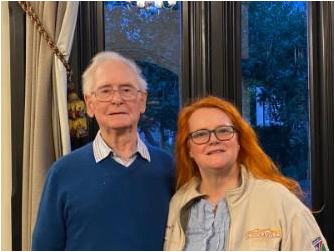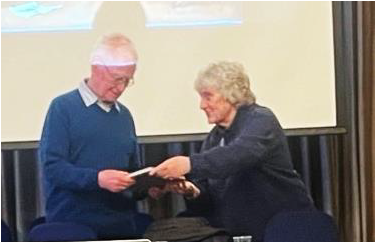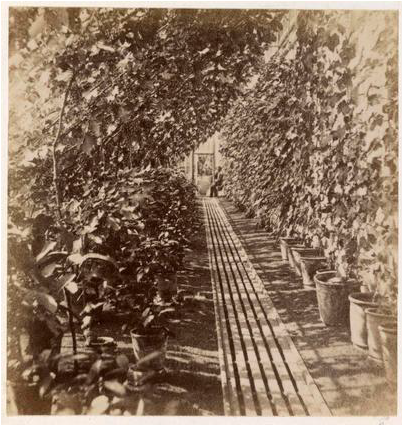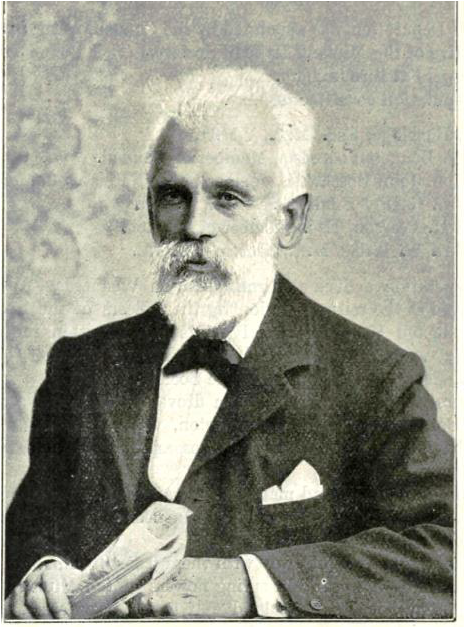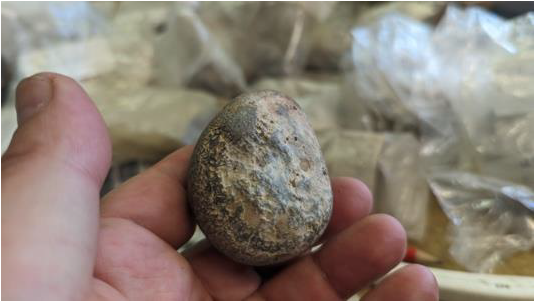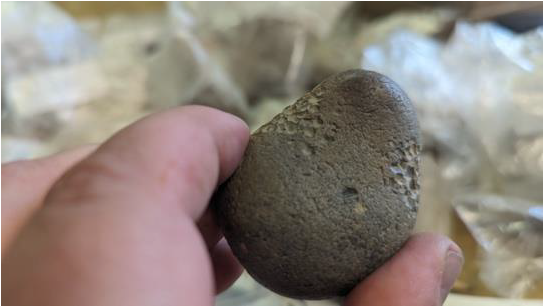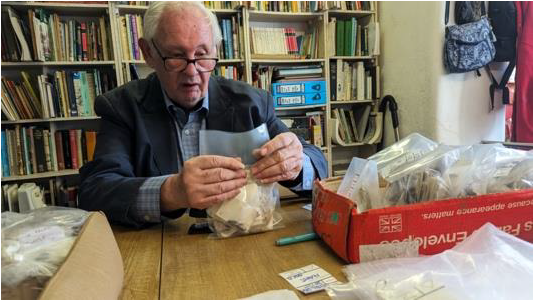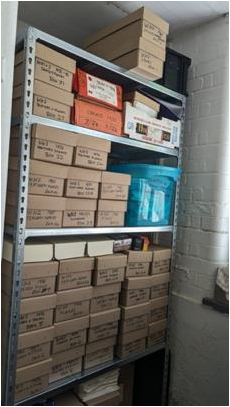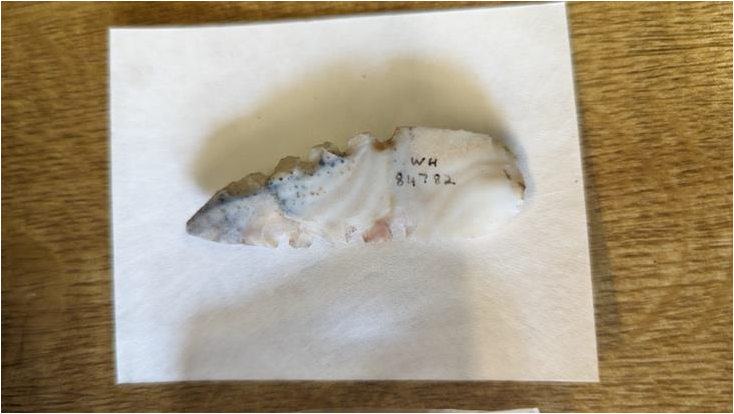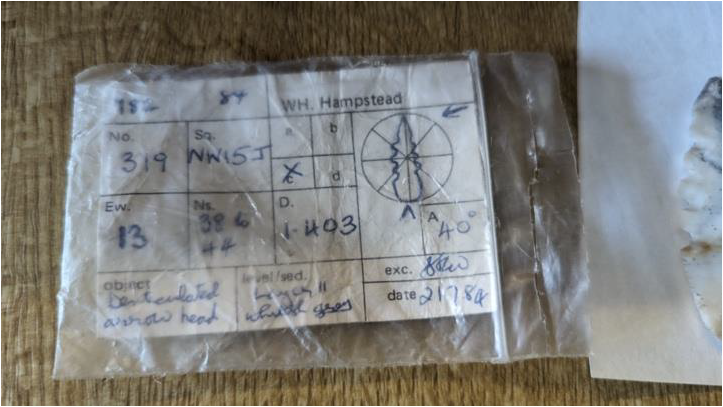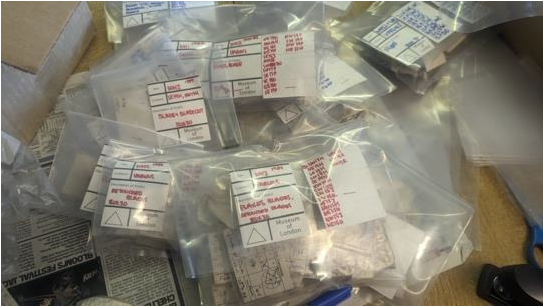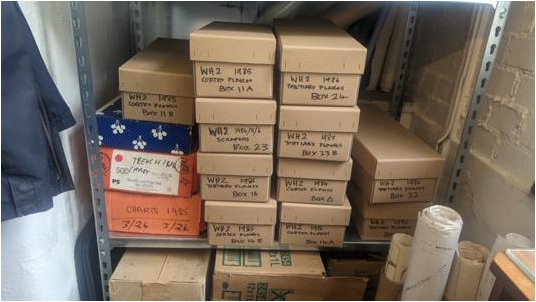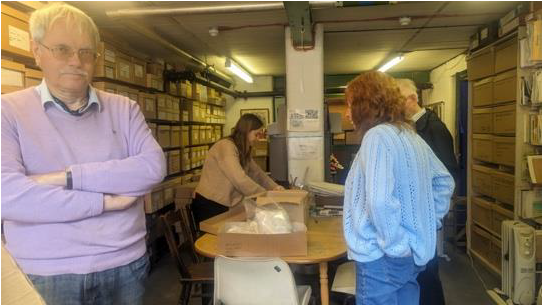
No. 640 July 2024 Edited by Melvyn Dresner
HADAS DIARY – Forthcoming Lectures and Events
Lectures are normally face-to-face, though lectures in winter may be on Zoom. Lectures are held in the Drawing Room, Avenue House, 17 East End Road, Finchley N3 3QE, 7.45 for 8pm. Buses 13, 125, 143, 326 and 460 pass close by, and it is a five to ten-minute walk from Finchley Central Station on the Barnet Branch of the Northern Line. Bus 382 also passes close to Finchley Central Station. We also on the new SuperLoop Bus, SL10. Tea/Coffee/biscuits are available for purchase after the talk.
Sunday 1st September, 11.30-16.30 Heritage Sunday Day at Avenue House, with HADAS stall, face painting and colleagues from other societies
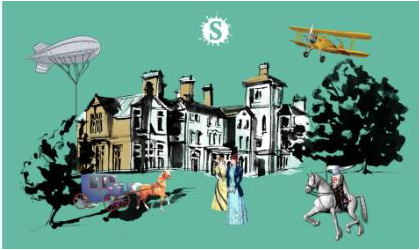
Tuesday 10 September 2024
Dr Wendy Morrison, Manager, Chilterns Heritage & Archaeology Partnership (CHAP) Beacon of the Past, Hillforts Project
The 2024/2025 programme to be confirmed
AGM and New Chairman
After more than 20 years leading HADAS as Chairman, Don Cooper stands down, he will continue on the committee. Sandra Claggett was elected as new chairman and agreed unanimously by members at the AGM (Annual General Meeting) on 11th June, more about Sandra below. There were 31 members present. Stewart Wild retired as society’s independent examiner of the accounts. Therefore, big thank you to both Don and Stewart for many years supporting the work of the society.
Peter Pickering thanked Don for his years as chairman (see Newsletter 389, August 2003, for Don’s election) Peter explained how there been seven chairmen of HADAS since its foundation in 1961, from Saxon to Mesolithic to Current Archaeology and for Don, it had been the era of Bird Pots, due to his work on this form of pottery in early noughties. Don’s work on ceramic bird nesting pots found at a dig at Church Farm, Greyhound Hill, Hendon, was on largest assemblage ever found in London, revealing an early appetite for sparrows.
1
Sheila Woodward, Frances Radford and Micky Watkins were made life members, see Newsletter (No. 637 April 2024) for article celebrating Shelia’s 100th birthday, and work with HADAS.
Jacqui Pearce and Andrew Selkirk continue as our President and Vice President, respectively, Peter Pickering as Vice Chairman, Janet Mortimer as Honorary Secretary, Roger Chapman as Treasurer and Jim Nelhams as Honorary Membership Secretary. Other committee members were re-elected as follows: Bill Bass, Don Cooper, Robin Densem, Melvyn Dresner, Susan Loveday Eric Morgan, Jo Nelhams, Susan Willetts and David Willoughby. New members of the committee can be co-opted between AGMs.
Below, Don and Sandra at AGM on 11th June 2024 and right, Don receiving presentation from Jacqui.
Sandra Claggett after a career working in Government re-trained in Archaeology at university first at Birkbeck as evening classes and then obtaining her Master’s at UCL. Archaeology has been a lifelong interest and she has been lucky in the past to excavate at various locations such as The Ness of Brodgar, the Palaeolithic caves of Gibraltar and Greek archaeology sites including the Bronze Age site of Keros and Daskalio where she was site manager.
She has been a member of HADAS for about 10 years she previously successfully ran the Birkbeck Archaeology Society as President for 3 years while studying there. During this time a range of activities and lectures were arranged such as visiting MoLA to look at skeletal remains to archaeological illustration. Also lectures concerning the Black Death to the Ark before Noah and the Stonehenge environment. And such activities as going behind the scenes at the British Museum. She is looking forward to supporting HADAS as your Chairman.
The AGM was followed by a lecture by Jackie Pearce on the wonderful world of clay tobacco pipes. We got to see a wonderful array of clay pipes held in Museum of London collection and in the archive. Jackie took us through the types of decorations and markings. This took us back to the earliest Elizabethan and Stuart pipes and to Jamestown in Virginia. We also heard about “gine” presses, “gine” from engine.
Bronze Age settlement dug up in garden Stewart Wild
A retired geologist says he has discovered remnants of a lost Bronze Age settlement in his back garden after learning to identify artefacts by watching television’s Time Team. Dr Andrew Beckly has amassed more than 2,500 artefacts, including blades and axes, after a chance find beneath his lawn in Wellington, Somerset. It all started when he turned up an arrowhead while sifting earth. He said he found it not long after he finished rewatching the popular Channel 4 history programme. He credited the show with helping him to quickly identify the arrowhead.
2
He said: “Finding the arrowhead was the starting point. I went to my wife and said ‘guess what I’ve found’ – she didn’t have a clue; it shot the history of the area back by 4,000 years.”
Dr Beckly was not sure if his arrowhead was a hunter’s ‘stray shot’ or evidence of something much bigger, so he expanded his search to nearby fields where he unearthed evidence which could challenge historians’ assumptions about life in Bronze Age Britain.
He said: “I decided to go back to basics. I got a couple of books on prehistoric flint work and gained an outline knowledge. But, primarily, I let the artefacts teach me. What I have discovered is repeat examples of things here which don’t appear in the textbooks. My gut feeling is this would have been a great location for prehistoric hunter-gatherers.
“I have heard frustrations expressed that it is commonly thought prehistory took place in the east of the country… the Southwest is pretty much ignored. But it would have been warm and the Channel was only a river at this time, so it would have been easy to come across from the Continent.
“The alternate view is that we had an Atlantic province rather than just the eastern province,” he said. “It shifts the balance away from everything being in the east.”
Referencing the work of archaeologist and Time Team star Francis Pryor, Dr Beckly said that he had “good reason” to think the Wellington hillside would have been “the perfect place” for our ancestors, in part because what is now the M5 would have made an attractive route for migrating animals. The site could now be examined by Heritage England which would carry out an assessment of the collection.
SOURCE: Daily Telegraph, 25 April 2024, item edited by Stewart Wild
Golden Hind Janet Mortimer
I recently went on a guided tour of the Golden Hind, the replica of Sir Francis Drake’s ship located near London Bridge. The guide was very informative, telling us the circumstances of Drake’s circumnavigation of the globe as he fled the pursuing Spanish after he had stolen their treasure. She showed us around the ship which was surprisingly small considering it started off with 80 people on board and the voyage lasted nearly three years. Some interesting facts that I learned are:-
Knots – The reason a ship’s speed is measured in knots was that they used a rope, knotted at measured intervals, with a wooden board called a chip log which was thrown over the side and the amount of knots that passed through the sailors’ hands would be counted whilst being timed by an hour glass.
Powder monkeys – the ceiling of the gun deck was very low, and indeed even the shortest of our visiting group had to stoop to go down there. In Drake’s day, children were employed to transport the gunpowder to the cannons, often in small kegs as they were able to scurry around quickly without stooping. They would clutch a couple of kegs to their chest and looked like little monkeys, hence the name given to them. At that time children as young as five years old were allowed to work – a fact not met with enthusiasm by my four year old granddaughter!
Biscuit – The ship’s biscuit was part of a sailor’s main diet. Made from flour and water, this was extremely hard and had to be soaked in warm liquid before it could be eaten. To break bits off, the sailors would use their elbow. This is the reason that the sign for biscuit in both British Sign Language and Makaton is tapping your elbow. All in all a very interesting visit and one I would highly recommend.
3
Claigmar Vineyard in Finchley: Commercial Grape Growing in the Nineteenth and Early Twentieth Centuries. Part 2 (1) Dudley Miles
In 1850, Peter Kay married a farmer’s daughter, Mary Ann Aedy. (2) In 1851 they were living in Ballards Lane with their newly born daughter, also called Mary Ann. His younger brother John, a gardener born in Scotland, was a member of the household. (3) In 1852 John married Mary Ann’s sister, Susannah or Susan. Peter Edmund Kay was born on 6 May 1853, but his mother died in childbirth. (4) Peter Kay died in August 1862, and his son was left an orphan at the age of nine. Kay’s Nursery was taken over by his uncle John. (5) He died in 1864, and the nursery was managed until the mid-1870s by trustees appointed to act until his children came of age, perhaps because Susannah was suffering from mental illness. (6) The nursery was probably run by Mr G. Osborne, who was awarded several prizes at horticultural shows in the late 1860s and early 1870s for Kay’s Nursery grapes. (7)
Susannah appears to have taken over running the Ballards Lane nursery when the trust expired. It was listed in directories from 1878 to 1889 as Peter and Susan Kay, apart from some directories which showed it in the late 1880s as Mrs Kay’s Nursery. (8) Peter Edmund inherited (or acquired) the freehold, and when Susannah died in 1889 he let it out. In 1898 he advertised it for sale by auction as Ballards Lane Nursery, one and a half acres with two cottages, fourteen greenhouses and trade buildings. (9)
Peter Edmund Kay and Claigmar Vineyard. (10)
After his father’s death, Peter Edmund Kay worked in a ducal vinery, almost certainly the one in the Duke of Buccleuch’s Dalkeith Palace Gardens in Dalkeith, Midlothian. He then became an apprentice of James.
______________________________
(1) This article was first published in the February 2024 issue of The Local Historian. It was a shortened version due to the journal’s size limitations. The full article will be printed in the HADAS newsletter in instalments over the next few months. I should like to thank Hugh Petrie, Barnet Council Heritage Development Officer, for his assistance. (2) Marriage of Mary Ann Aedy to Peter Kay, 12 February 1850
(3) Peter Kay, Ballards Lane, 1851 Census
(4) London, England, Church of England Marriages and Banns, 1754-1932, marriage of Susannah Aedy to John Kay, 30 December 1852; Births and Baptisms, St Mary Finchley, Peter Edmund Kay, 6 May 1853; Church of England Deaths and Burials, St Mary Finchley, Mary Ann Kay buried 13 May 1853
(5) Probate Registry, will and grant of Peter Kay, died 5 August 1862
(6) The 1861 census shows John living with his brother in Ballards Lane, while Susannah was a visitor to her mother and their children Nancy and Margaret Kay were boarders with Mary Ann Coffey. John’s will dated 1864 provided for Coffey to live in his house and take charge of his wife and children. His executors included Robert Kay, a Kenwood gardener, and Charles Plowman, a builder who in 1882 submitted plans for (and most likely built) a detached house for Peter Edmund Kay which was to be his home, called Claigmar, for the rest of his life. The nursery was listed in directories for the ten years after John’s death as ‘trustees of John Kay’ (Peter Kay, Ballards Lane, Finchley, 1861 census; Mary Coffee (sic), Finchley, 1861 Census, Susannah Kay, Finchley, 1861 Census; Probate Registry, will and grant of John Kay, died 9 May 1864; Post Office Directory of the Six Home Counties, Middlesex, Kelly & Co, 1866, p. 553; Post Office Directory of the Six Home Counties, Part 1, Essex, Herts, Middlesex, Kent, Kelly & Co, 1870, p. 640; Ibid, 1874, p. 649; Barnet Press, 7 January 1882, p. 5).
(7) The Times, 11 September 1867, p. 8; Morning Post, 26 August 1868, p. 6; Ibid, 7 July 1870, p. 7
(8) Post Office Directory of the Six Home Counties, Part 1, Essex, Herts, Middlesex, Kent, Kelly & Co, 1878, p. 709; Ibid, 1882, p. 865; Kelly’s Directory of Essex, Hertfordshire and Middlesex, 1886, p. 923; The Barnet, Finchley, Hendon, & District Directory for 1886-1887, Hutchings & Crowsley, p. 97; Kelly’s Directory of Barnet, Finchley, Hendon & District, 1887 and 1888, p. 93; Ibid, 1889-90, p. 77
(9) Susanna Kay in the England & Wales, Civil Registration Death Index, 1837-1915, 1889; Hendon & Finchley Times, 29 April 1898, p. 3
(10) The principal sources on the Claigmar Vineyard are: Peter Kay, ‘Grape Culture in its Commercial Aspect’, Paper read to the Horticultural Club on 5 May, The Garden, 30 May 1896, vol. 49, pp. 397-400; Peter E. Kay V.M.H., ‘Saving and Using the Rain’, read 25 September 1900, Journal of the Royal Horticultural Society of London, 1900-1901, new series, vol. 25, pp. 146-54; (The Garden – Google Books) ‘Through American Eyes, Peter E. Kay’s, London’, The American Florist, 28 December 1895, pp. 554, 555, 556; ‘Notable Nurseries: The Claigmar Vineyards at Finchley’, pp. 370-72; Bear, ‘Fruit Growing under Glass’, pp. 274-78; advertisement for share offer in P. E. Kay Limited, Financial Times, 29 January 1904, p. 8.
4
Sweet, who had himself been an apprentice of Peter Kay, and who commenced trading in the year of Kay’s death. At the time of the 1871 census Peter Edmund Kay was in Dalkeith, probably on a return visit to the ducal vinery. (11) He moved back to Finchley soon afterwards and started up in business in 1872 at the age of nineteen. (12) His unmarried aunt, Margaret Kay, leased a parcel of land in Finchley for 30 years from 25 March 1873 at a rent of £22.10 per annum, with a covenant to build greenhouses. (13) She was almost certainly acting on Peter’s behalf as she is not known to have played any role in the business, and as he was below the age of majority he could not sign a lease in his own name. He is listed as a gardener and florist in Long Lane in 1878. (14)
The Duke of Buccleuch’s vinery in Dalkeith Palace Gardens circa 1860. Peter Edmund Kay worked there in 1871, and probably in the early to mid-1860s after the death of his father. (Photo by George Washington Wilson in an album arranged by Prince Albert between 1860 and 1861, https://www.rct.uk/collection/2320131/vinery-dalkeith-palace-gardens).
James Sweet V.M.H trained Peter Edmund Kay. (Journal of the Royal Horticultural Society of London, new series, vol. 26, 1901-1902, p. xix). Sweet developed an improved method of greenhouse construction, with much larger panes of glass, reducing the cost of both construction and repair (Bear, ‘Flower and Fruit Farming in England II’, Journal of the Royal Agricultural Society of England, Third Series, vol. 9, 1898, pp 512-50 at 530).
_____________________________________
(11) Kay, ‘Grape Culture in its Commercial Aspect’, pp. 397-398; ‘Notable Nurseries: The Claigmar Vineyards at Finchley’, p. 370; Peter E. Kay, Dalkeith, 1871 Census. The census shows him as a gardener, age 17, lodging in Croft Street, Dalkeith. He stated that he trained in a noted ducal vinery before his apprenticeship in a commercial vinery. This apprenticeship cannot have after his time in Dalkeith in 1871 as he started his own business the following year, and it is likely that he made a return visit in that year.
(12) Financial Times, 29 January 1904, p. 8
(13) De Burgh Family, Cooper Family Leases, London Metropolitan Archives, ACC/1386/0822, p. 68. (Report (lma.gov.uk). The lessee is described as ‘Margaret Kay of Fife, North Britain, spinster’.
(14) Post Office Directory of the Six Home Counties, Part 1, Essex, Herts, Middlesex, Kent, Kelly & Co, 1878, p. 709
5
In 1881, he was living in Gresfield Villas, Long Lane, with Margaret Kay and a sixteen year old servant girl. (15) His business was so successful that in 1882 he was able to have a detached house in Oakfield Road built for him, and this became his home, called Claigmar, for the rest of his life. (16) In Kelly’s Directory for 1886 he is listed as a florist in Oakfield Road. (17) The earliest known use of the name Claigmar Vineyard is dated 1887 in A list of the governors and benefactors of the Royal Scottish Hospital for the relief of poor aged, infirm, and unfortunate natives of Scotland, resident in the metropolis and neighbourhood. (18) He maintained his connections with Scotland all his life and had bankers and solicitors in Edinburgh as well as London. (19) He probably visited Scotland on numerous occasions. On 7 September 1887 he married Jane (or Jeanie) Campbell Glassford, who was born in Greenock in 1854. Their first two children were born in 1889 and 1890, and the 1891 census records their home address as Claigmar, Oakfield Road. The family had two Scottish-born servants. (20) The census also records that Kay’s Aunt Margaret, and sister, Mary Ann, were living together in Finchley with a servant. They are described as ‘living on own means’, probably provided by Peter Edmund when he married. (21) In 1894, Mary Ann married an accountant called Rees James. (22)
In the 1880s, Kay became a member of the horticultural establishment. Archibald Barron was the most respected horticulturist in the late nineteenth century and in the preface to the 1887 edition of Vines and Vine Culture, Kay was one of those he thanked for their assistance. (23) Kay was a member of the committee of The Market Gardeners, Nurserymen, and Farmers’ Association, and in 1895 he was one of the incorporation directors and shareholders of The Nurserymen’s, Market Gardeners’ and General Hailstorm Insurance Corporation Ltd. (24) He was awarded medals for his grapes at horticultural shows in Britain, France and Germany, (25) and he gave papers to the Horticultural Club and the Royal Horticultural Society. (26) In 1897, the Society inaugurated its highest award, the Victoria Medal of Honour (V.M.H.) for ‘British horticulturists deserving of special honour by the Society’, and Kay was one of the sixty initial recipients. (27) In 1900, he became a member of the committee of the Royal Gardeners’ Orphan Fund, (28) and in 1902 he was elected a fellow of the Royal Horticultural Society. (29) Locally, he was president of the Finchley Horticultural Society
_________________________________________
(15) Peter Edmund Kay, Gresfield Villas, 1881 Census. Margaret Kay is shown as Kay’s unmarried aunt, aged 57, born in Scotland. She is listed as a housekeeper, but this has been crossed through.
(16) Barnet Press, 7 January 1882, p. 5. ‘The Works Committee [of Finchley Local Board] recommended that plans submitted by Mr C. Plowman for a detached house, in Oakfield-road, Long-lane, for Mr P. E. Kay, be approved.’
(17) Kelly’s Directory of Essex, Hertfordshire and Middlesex, 1886, p. 923
(18) A list of the governors and benefactors of the Royal Scottish Hospital for the relief of poor aged, infirm, and unfortunate natives of Scotland, resident in the metropolis and neighbourhood, Royal Scottish Hospital, 1903, p. 129. This records that in 1887 Kay, Peter E., Claigmar Vineyard, Church End, Finchley, N,, contributed one guinea.
(19) Financial Times, 29 January 1904, p. 8
(20) Morning Post, 12 September 1887, p. 1; Peter Edmund Kay, Claigmar, Finchley, 1891 Census. A rare insight into Kay’s private life is that he was fined 10 shillings plus costs in 1897 for allowing a dog to run free unmuzzled (Finchley Press, 28 August 1897, p. 3).
(21) Margaret Kay, Manor Villa, Station Road, Finchley, 1891 Census
(22) Marriage Record of Mary Ann Kay. Rees James is sometimes shown as Reese James.
(23) Barron, Vines and Vine Culture, preface to the second edition, 1887; ‘The Judges at the International Horticultural Exhibition’, p. 212. Barron was the superintendent of the Royal Horticultural Society gardens and a V.M.H.
(24) The Gardeners’ Chronicle, 2 January 1892, p, 9; Journal of Horticulture and Cottage Gardener, series 3, vol. 30, 28 March 1895, p. 265 (Gardeners’ Chronicle – Google Books). The General Hailstorm Insurance Corporation was founded on the initiative of James Sweet (Journal of the Royal Horticultural Society of London, new series, vol. 26, 1901-1902, p. xix).
(25) Journal of Horticulture and Cottage Gardener, 12 September 1889, vol. 19, p. 230 (Journal of Horticulture and Practical Gardening – Google Books); The Garden, 3 September 1892, vol. 42, p. 219 (The Garden – Google Books); Revue Horticole, vol. 61, 1889, p. 475 (Journal of Horticulture and Practical Gardening – Google Books); Journal de la Société Nationale d’horticulture de France, 1887, p. 765; Jardins de France, 1890, p. 47; Wiener Illustrirte Garten-Zeitung, January 1890, vol. 15, p. 47 (Journal de la Société nationale d’horticulture de France – Google Books).
(26) Kay, ‘Grape Culture in its Commercial Aspect’, pp. 397-400; Kay, ‘Saving and Using the Rain’, pp. 146-54
(27) Journal of the Royal Horticultural Society of London, new series, vol. 21, 1897-1898, p. 3 (;new ser.:v.21 (1897-1898) – Journal of the Royal Horticultural Society of London – Biodiversity Heritage Library (biodiversitylibrary.org)); ‘RHS People Awards’, Royal Horticultural Society website (RHS People Awards / RHS Gardening). The number of V.M.H. holders at any one time is limited to the number of years of Queen Victoria’s reign, 60 when it was inaugurated and 63 since her death.
(28) Gardeners’ Chronicle, Series 3, vol 27, 24 February 1900, p. 126 (ser.3:v.27 (1900) – The Gardeners’ chronicle – Biodiversity Heritage Library (biodiversitylibrary.org)). Kay resigned in 1904 (The Garden, 20 February 1904, p. 141 (v.65 1904 – The Garden – Biodiversity Heritage Library (biodiversitylibrary.org))).
(29) Journal of the Royal Horticultural Society of London, new series, vol. 27, 1902-1903, p. ii (new ser.:v.27 (1902-1903) – Journal of the Royal Horticultural Society of London – Biodiversity Heritage Library (biodiversitylibrary.org)).
6
and the Finchley Dahlia Society, and treasurer of the Finchley Chrysanthemum Society. He almost always declined positions in organizations outside the horticultural sphere. (30)
Kay had a cheerful disposition and he declared: ‘The occupation of a vine grower is one of the most pleasant that can be undertaken; it is full of ever-changing interest.’ (31) In 1892 he was one of the judges at the International Horticultural Exhibition at Earls Court, and in a description of the judges in The Gardening World, he is described as:
a genial, kind hearted man, in whom the gardening charities, and numerous other charitable objects have a constant and generous supporter. Mr Kay is a man of wide renown as a grower of fruit, and especially of grapes, for market. He is indeed one of the magnates of the business, standing second to few in the extent of his cultivation, and second to none in the quality of it. He is perhaps the largest grower of the Canon Hall Muscat in the world, and certainly he can never have been surpassed in his success with this shy-setting but otherwise noble grape. Mr Kay’s vineyard is a thing to see and dream of. (32)
In 1895 a group of American horticulturalists visited Claigmar Vineyard, and on their return to the United States they gave an account in the American Florist of their visit to Kay, who was described as ‘easily first’ among specialists in growing grapes under glass. He then had twelve greenhouses for grapes, each 400 feet long by 36 wide. Each house contained about 10,000 bunches, averaging about 1 to 1½ pounds per bunch. The visitors observed: ‘It is a grand and bewildering sight to stand at the end of one of these large houses and see the great clusters of grapes all about, and as one looks a distance along, the leaves seem to fade away and all is grapes.’ Canon Hall Muscat fetched high prices, but had a limited sale, and he also grew the cheaper Black Alicante and Gros Colman on a large scale. The houses were fumigated by sulphur and warmed by a network of water pipes heated to as high a temperature as possible. He had 43 greenhouses 150 feet long by 14 wide for cucumbers. After their tour, the American party spent the evening with Kay, described as ‘a most genial gentleman’, and his ‘charming wife’. (33) Kay grew Comet tomatoes, which he brought from Scotland in the early 1890s, and his own strain of cucumbers. (34)
Bear observed:
The most important of the Metropolitan districts in relation to hot-house fruit production are those situated north of London, and the notes of visits to some of the largest glass-house nurseries could not begin more appropriately than with those relating to the great undertaking founded and carried on by Mr Peter Kay, at Finchley. Mr Kay has long been noted as one of the best grape-growers in the country, his success with the Canon Hall variety, a difficult one to grow to perfection, being unequalled. (35)
Bear stated that up to 1899, Kay spent £50,000 on greenhouses alone. The area covered by glass was 19½ acres and the total occupied by the nursery was 34 acres. The greenhouses devoted to grapes were described by Bear as “great structures, which good judges have declared the finest block of vineries in the world”. (36)
_______________________________
(30) Hendon & Finchley Times, 28 December 1894, p. 6; Ibid, 20 October 1899, p. 4; Ibid, 27 August 1909, p. 6; Finchley Press, 10 September 1898, p. 7
(31) ‘Grape Culture in its Commercial Aspect’, p. 400
(32) ‘The Judges at the International Horticultural Exhibition’, p. 212
(33) ‘Through American Eyes’, pp. 554, 555, 556. See also The Gardening World, 9 July 1898, p. 713, which has a photograph of Kay’s ‘famous Canon Hall Muscat house’.
(34) ‘Notable Nurseries: The Claigmar Vineyards at Finchley’, p. 371
(35) Bear, ‘Fruit Growing under Glass’, p. 274
(36) Ibid. pp. 274-75. On Kay’s greenhouses, see also Barron, Vines and Vine Culture, 4th ed., 1900, p. 99.
7
Barron commented that a good soil was an important factor in the success of a vineyard, and he observed: ‘One of the most successful cultivators, Mr Kay, of Finchley, is favoured with the finest of soil—a somewhat heavy yellow loam, which is used unsparingly mixed with bones, Thomson’s vine manure etc’. (37) Obtaining sufficient water was expensive, and Kay was known for having developed an effective system for storing and using rainwater. In the late 1890s he built a two-acre reservoir to store rainwater falling on the greenhouses. It had a capacity of five million gallons of water, which was pumped to the top of water towers, and then flowed down to water the fruit, saving a water rate of more than £700 a year. (38) Rainwater was better for vines as it was soft, unlike the cold and very hard water supplied by the water company. In 1900, he read a paper on the storage and use of rainwater to the Royal Horticultural Society. (39)
The vineyard expanded rapidly. In 1904 Kay stated that the area covered by greenhouses (including those for tomatoes and cucumbers) had increased from 1.8 acres at incorporation in 1889 to 18 acres. (40) The Ordnance Survey (OS) map of 1894 shows it extending a quarter of a mile from the Great Northern Railway line (now the Northern line) nearly to Long Lane, and on both sides of Oakfield Road. A 1911 OS map shows it occupying most of the land from Dukes Avenue to what is now the North Circular. (41)
Kay’s grape production increased from 10 tons in 1889 to 100 tons per annum in 1903. He was one of the major producers, although well below the 400 tons a year Messrs Rochford expected when their vines reached full maturity. In the early 1900s, Kay produced an average of 100 tons of tomatoes and 20,000 dozens of cucumbers a year. The fruit all had a first grade ‘Mark’, and was well known in all the markets of England and Scotland. (42) All produce since his start in business in 1872 had been sent to the leading Covent Garden importer and wholesaler, George Monro, a V.M.H. and Fellow of the Royal Horticultural Society. (43) Kay may have taken advantage of the rising value of land by buying and selling property. In the late 1890s he owned around thirty acres in Finchley apart from the nursery, and in 1898, he auctioned five blocks of building land with frontages totalling 1367 feet on Long Lane and Squires Lane, and a freehold estate of fifteen and a half acres close to Finchley Station (now Finchley Central). (44) However, he may have purchased the land originally with the intention of expanding the vineyard further.
On 14 March 1889 Claigmar Vineyard was incorporated as P. E. Kay, Limited. (45) The inaugural directors were Kay, his wife and his aunt. (46) In 1904, the earliest date after incorporation when the directors are recorded, they were Kay, his brother-in-law Rees James and Richard Cobley, a fruit grower who lived in Waltham Cross. A valuers’ report of the company in 1901 stated that there were ‘145 vineries, cucumber and tomato houses, with the heating apparatus and fittings, water tower and other trade buildings, two reservoirs with water mains, pumps, service pipes and fittings, vines and vine borders, tomatoes and hanging fruit, horses, vans, carts, utensils in trade and other items’. The total length of the greenhouses was 5.2 miles, with 25.5 miles of 4-inch hot water piping and 84 boilers. The total area was 29 acres, two-thirds held freehold
__________________________________________
(37) Barron, Vines and Vine Culture, 3rd ed., p. 91
(38) Financial Times, 29 January 1904, p. 8; Finchley Press, 24 September 1898, p. 2; Ibid, 16 November 1901, p. 8; R. Lewis Castle, Book of Market Gardening, London 1906, p. 41
(39) Kay, ‘Saving and Using the Rain’, pp. 146-54
(40) Financial Times, 29 January 1904, p. 8. The figures are given as: ‘from 80,000 square feet to 805,000 square feet, or from 2½ acres to 28 acres’. The figures for acreage have been corrected as they are obviously too high as the result of conversion errors.
(41) Ordnance Survey, 26 inches to a mile, Mid Finchley 1894 and 1911. Directories list another market grower in Oakfield Road, and this probably occupied a small part of the area shown on the map as Claigmar Vineyard.
(42) Financial Times, 29 January 1904, p. 8; Barron, Vines and Vine Culture, 4th ed., p. 94
(43) Financial Times, 29 January 1904, p. 8; ‘Packing Australian Fruit’, The Garden, vol. 43, 17 June 1893, p. 508; Journal of the Royal Horticultural Society of London, New Series, vol. 21, 1897, pp. 578-79 (v.43 1893 – The Garden – Biodiversity Heritage Library (biodiversitylibrary.org).
(44) Bear, ‘Fruit Growing under Glass’, p. 274; Hendon & Finchley Times, 29 April 1898, p. 3
(45) The Stock Exchange Year-Book, 1904, entry for P. E. Kay Limited. The name was shown in a variety of ways in directories such as Peter E. Kay Limited and Peter Edmund Kay Limited. The trading name was sometimes shown as Claigmar, Claigmar Vinery and Claigmar Vineries.
(46) Financial Times, 19 March 1889, p. 4
8
and one-third leasehold, with leases expired in 1977. The ground rent was £155 per annum until 1911 and £200 per annum for the rest of the term. The location close to Finchley Railway Station made the land prospectively valuable for a suburban housing estate. The company was valued at £65,243, equivalent to £6.4 million at 2023 prices. (47) A newspaper report of a rating appeal by Kay in 1906 gives a total acreage of 29.5 acres, including 16 acres of greenhouses, 10.5 acres of waste land, the reservoir and an engine works. The number of greenhouses had increased since 1901 to 151 with a length of 5.4 miles. (48) Kay was the largest ratepayer in the district. (49)
Kay claimed that, apart from pineapples, fruit grown under glass in England was superior in quality to foreign produce and did not suffer from foreign competition to the same degree as other industries. He argued that cheap imported grapes had probably prevented a greater fall in prices by encouraging consumers to consume the fruit, and thus giving them a taste for the superior English produce (50) He seems to have been more optimistic about the prospects of the industry than other growers, and in the 1890s he had continued to expand, with almost a quarter of his greenhouses erected in 1898. (51) Vines had been planted by 1903 to increase annual production from 100 to 150 tons. His expenditure on developing the property was very high. In addition to the £50,000 spent on erecting greenhouses, the water management works were very expensive. He also launched a new company in 1903, Mill Hill Vineyard Limited. The costs of these investments seem to have strained his finances, and in 1904 he offered to sell part of his holdings in the company. An advertisement for the offer in the Financial Times stated that it was made to repay Kay for personal obligations he had entered into in order to develop the property. The issued capital was 1000 £10 ordinary shares, which had never paid a dividend of less than 7% per annum, and 200 6% preference shares of £100. There were also 425 5% £100 mortgage debentures. Under an agreement with the company, he was required to retain four-fifths of the ordinary shares, and he now offered to sell to the public all his other holdings, 82 preference shares and 355 mortgage debentures, all at par. The offer statement included an accountants’ certificate stating that the average profit in the last three years had been £5,675. This was £2,350 after preference share dividends and debenture interest. (52) The Statist, a financial weekly, was critical, commenting that a three-year average profit was inadequate financial information, and described the offer as ‘too speculative for the ordinary investor’.53 It is not known whether it was accepted. Kay would have retained control as the shares had equal voting rights, and he would still have held 800 shares out of the total of 1200.
Kay became involved in personal difficulties in the years before his death in 1909, but the details are unclear. According to an obituary: ‘A few years ago, through a technicality, Mr Kay’s affairs became somewhat involved, and this has been a source of great worry to him.’54 He seems to have withdrawn from public life after 1905. In earlier years, he was regularly listed in the Journal of the Royal Horticultural
_____________________________________________________
(47) Financial Times, 29 January 1904, p. 8; Bank of England inflation calculator. There was only one reservoir so the mention of two of them is an error.
(48) ‘Finchley Greenhouses’, Finchley Press, 27 January 1906, p. 10. In 1902, Kay granted Finchley Council access to an electricity works through a road in the Claigmar site for a nominal rent, but in 1905 he demanded that the Council remove electricity cables laid along the road because of the nuisance caused by smoke from burning coal. (Meeting of Finchley Urban District Council Electricity Committee, 26 July 1905, in Barnet History https://open.barnet.gov.uk/download/2rpm1/l3y/Finchley_Urban_District_Council_1904_June-1905_November.pdf (BH), Finchley Urban District Council (FUDC), June 1904-November 1905, pp. 414-22).
(49) Hendon & Finchley Times, 27 August 1909, p. 6
(50) ‘Grape Culture in its Commercial Aspect’, p. 398
(51) Bear, ‘Fruit Growing under Glass’, p. 274
(52) Financial Times, 29 January 1904, p. 8; Ibid, 21 December 1903, p. 4
(53) The Statist, 30 January 1904, p. 211
(54) Hendon & Finchley Times, 27 August 1909, p. 6
9
Society as a judge and contributor to prize funds at horticultural exhibitions, and his last appearance was in that year as a judge at the Society’s Annual Exhibition of British-Grown Fruit. (55) He was able to get the assessment of the greenhouses for rates reduced in 1906, (56) but he ceased to be a director of P. E. Kay Limited in 1906 or 1907, and was replaced by George Monro. (57) By this time, the company’s financial reputation seems to have declined. In 1908, six £100 mortgage debentures were offered for sale by auction, but they were unsold, and they were offered again at a 25% discount. (58) In the same year, the case of Scott v. P. E. Kay Limited was scheduled for a hearing with witnesses in the Chancery Division of the High Court. (59) No details of the case are known. To be continued…..
And finally…
Following recent publication of the Phase II of the excavation of the Mesolithic site on West Heath, Hampstead, the final excavation between 1984 and 1986. The HADAS finds team are re-bagging and re-boxing the finds so the physical archive is protected to current standard:
OTHER SOCIETIES’ EVENTS Eric Morgan
Not all societies or organisations have returned to pre-covid conditions, please check with them before planning to attend.
__________________________
(55) Journal of the Royal Horticultural Society of London, New Series, vol. 30, 1906, pp. 113-14
(56) Hendon & Finchley Times, 8 September 1905, p. 5; Finchley Press, 27 January 1906, p. 10
(57) Stock Exchange Year-Book, entries for P. E. Kay Limited for 1906 and 1907
(58) Finchley Press, 8 May 1908, p. 6; Ibid, 31 July 1908, p. 6
(59) The Law Times, 11 January 1908, p. 253; The Solicitors’ Journal and Weekly Reporter, 11 January 1908, p. 180
10
Sunday 7th July, 2 pm. – Remembering WW1 and WW2. Guided walk. Learn about the Jewish soldiers who lost their lives in the wars.
Tuesday 20th August, 6.30 pm. Women of Willesden. Celebrate significant Jewish women who helped change history through their Philanthropy, Scientific and Business achievements. For info and booking please visit www.willesdenjewishcemetery.org.uk or 0208 459 6107
Sunday 7 July, 10.30 am. Heath and Hampstead Society. Constable and Hampstead. Walk led by Suzanne Grundy. Lasts approximately 2 hours. Meet at Spaniard’s End (By Flower Stall) and Cattle Trough near Spaniard’s Inn, Spaniard’s Road, London NW3 7JJ. Ends at St. John’s Hampstead Parish Church, Church Row, London. NW3 6UU. Donation £5. Please contact Thomas Radice on 07941 528034 or email hhs.walks@gmail.com or visit www.heathandhampstead.org.
Sunday 7 July, 12-5 pm. Hampstead Summer Festival Fair in Heath Street. Over 100 stalls of craft, food and drink. Music. Free.
Sunday 7 July to Sunday 21 July. Enfield Archaeological Society. Elsyng Palace Excavation in the grounds of Forty Hall, Forty Hill, Enfield. EN2 9HA. Dig to visit www.enfarchsoc.org/dig. There is an OPEN DAY 11 am. – 4 pm. on Sunday 13 July for members of the public. COLAS will also be visiting.
Monday 8 July 7.30 pm. Barnet Museum and Local History Society, St. John the Baptist Church, Chipping Barnet, Corner High Street/Wood Street, Barnet, EN5 4BW. What Medieval Women Wore. Talk by Kathleen Alston-Cole. See www.barnetmuseum.co.uk.
Tuesday 9 July, 7 pm. Camden History Society. St John’s Hampstead Parish Church, Church Row, London NW3 6UU. AGM. Followed by the History and Social Role of the Camden New Journal. Talk by Dan Carrier. Wine and soft drinks 6.30 pm – 7 pm. Visit http://www.camdenhistorysociety.org.
Tuesday 9 July, 7.45 pm. Amateur Geological Society. Finchley Baptist Church Hall, 6 East End Road/Corner of Stanhope Avenue, London N3 3LX. (almost opposite Avenue House). Geophysical Surveying in Africa. Talk by Roger May. Full details on www.amgeosoc.wordpress.com.
Tuesday 9th July, 11 am. Kingsbury Library. Kingsbury Road, London NW9 9HE. Day Out at Wembley Park, 100 Years Ago. Talk by Philip Grant (Wembley History Society). On a tour of the British Empire Empire Exhibition in 1924 from a guidebook. Refreshments to be provided.
Thursday 11th July, 2 pm. Hornsey Historical Society. Union Church Hall, (corner of Ferme Park Road/Weston Park) N8 9BX. Will also be on Zoom. Annual General Meeting. For details please visit www.hornseyhistorical.org.uk.
Saturday 13 July to Sunday 28 July. CBA Festival of Archaeology. For more info about events visit https://www.archaeologyuk.org/festival.html.
Monday 15th July, 8 pm. Enfield Society. Jubilee Hall, 2, Parsonage Lane, Junction Chase side, Enfield, EN2 0AJ. From Monoux and Morris to Beer and Bacon Jam. Talk by Joanna Moncrieff. Please visit www.enfieldsociety.org.uk.
Thursday 18th July, 6.30 pm. Willesden Green Library. Willesden High Road/corner Brondesbury Park, London NW10 2SF. The Willesden Green Library Story. Talk by Philip Grant to discover how the original Victorian public library came about.
Friday 19 July, 7 pm. COLAS. Address as for 21 June. Also on Zoom, 81, Newgate Street – The Former G.P.O site re-visited. Talk by Kathy Davidson, Pre-Construct Archaeology (PCA). Please book via Eventbrite. See www.colas.org.uk.
Friday 19 July, 7 pm. Wembley History Society. St Andrew’s Church Hall (behind St. Andrew’s New Church) Church Lane, Kingsbury, London. NW9 8RZ. Tripping Up Everest. Talk by Lester Hillman in the Centenary Year of Mallory’s Expedition. Visitors £3. Refreshments available.
Saturday 20th and Sunday 21st July. London Canal Museum. 12-13 New Wharf Road, Kings Cross, London N1 9RT. Ice Heritage Weekend. Celebrates all things ice and the history of the building. Part of The Festival of Archaeology including boat trips, Victorian ice cream making demonstrations and on
11
Sunday a rare chance to descend into the historic underground ice well. Please visit www.canalmuseum.org.uk. Normal museum entry charges.
Saturday 27 July. Colas at Greenwich Park. CBA Festival of Archaeology Event. By General Wolfe Statue celebrating the Greenwich Park restored Project, see www.archeologyuk.org/festival.html.
Saturday 27th July, 11 am. Enfield Town. A circular walk including a guided tour of St. Andrew’s Church., led by Sue Grayson Ford. for details please visit www.enfieldsociety.org.uk.
Tuesday 6th August, 11 am. Enfield Society. Jubilee Hall, address as for 15th July. Palmers Green. Talk by Adrian Day on a tour of Palmers Green, an Edwardian suburb.
Tuesday 13th August, 7.45 pm. Amateur Geological Society, Finchley Baptist Church Hall, 6, East End Road, Corner Stanhope Avenue, London N3 3LX. (Almost opposite Avenue House). Members Evening. with a theme of Fossils in Flint. Further info: www.amgeosoc.wordpress.com.
**********************************************************************************************************
With many thanks to this month’s contributors: Sandra Claggett, Stewart Wild, Janet Mortimer, Dudley Miles, Eric Morgan
******************************************************************************************************************************
Hendon and District Archaeological Society
Chairman Sandra Claggett, c/o Avenue House, 17 East End Road, Finchley N3 3QE
email: chairman@hadas.org.uk
Hon. Secretary Janet Mortimer, 34, Cloister Road, Childs Hill, London NW2 2NP
(07449 978121) email: secretary@hadas.org.uk
Hon. Treasurer Roger Chapman, 50, Summerlee Avenue, London N2 9QP (07855 304488)
email: treasurer@hadas.org.uk
Membership Sec. Jim Nelhams, 61, Potters Road Barnet EN5 5HS (020 8449 7076)
email: membership@hadas.org.uk
Website at: www.hadas.org.uk – join the HADAS email discussion group via the website.
12

